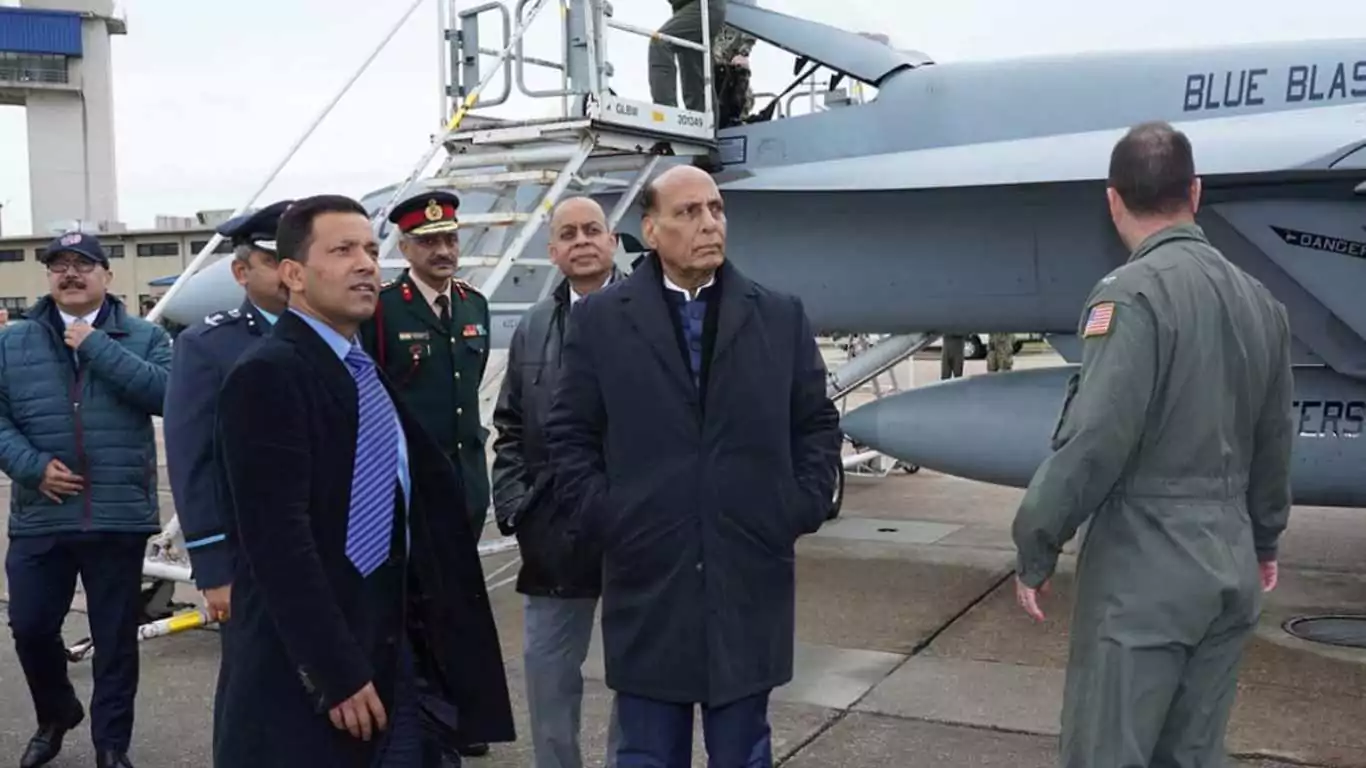Defense Minister Rajnath Singh visited one of the most advanced naval testing facilities in the world, the William B. Morgan Large Cavitation Channel (LCC), at the Naval Surface Warfare Center in Memphis, Tennessee. The visit, which took place on Saturday, comes at a time when India is actively considering the establishment of a similar facility to enhance its indigenous ship and submarine design capabilities.
The LCC, operational since 1991, is renowned as one of the world’s largest and most technically advanced high-speed, variable-pressure water tunnel facilities. It plays a crucial role in testing large-scale models of advanced ship and submarine systems, as well as full-scale torpedoes, under controlled conditions. The facility allows the US Navy to measure critical performance parameters such as power efficiency and propeller noise, providing substantial cost savings and operational insights. The facility’s capabilities extend beyond military applications, also serving commercial interests.
Rajnath Singh accompanied by senior Indian Navy officials
During his visit, Singh was accompanied by senior officials from the Indian Navy and the Defence Research and Development Organisation (DRDO). The delegation was briefed on the technical prowess of the LCC by senior US Navy officials. The discussions during the visit were particularly focused on supporting India’s ongoing proposal to establish a similar testing facility for indigenous design and development of naval platforms.
“The discussions intend to support the ongoing proposal for establishment of a similar facility for indigenous design and development in India,” the Indian Ministry of Defence said in a statement. This move aligns with India’s broader strategic objective of enhancing self-reliance in defense manufacturing, particularly in the naval domain.
Must Read: Bengal Rape and Murder Case: CBI Team From Delhi To Visit Crime Scene Tomorrow
Singh’s visit to Memphis was part of a broader four-day trip to the United States, which included high-level meetings in Washington, D.C. He met with US National Security Advisor Jake Sullivan and Secretary of Defense Lloyd Austin, where they discussed a range of critical issues. These talks covered the impact of global developments on geopolitics, regional security dynamics, expanding cooperation in the Indo-Pacific region, and deepening defense industrial collaboration between the two nations.
“Witnessed the pathbreaking experiments at the facility. India and the US look forward to working together and benefit from each other’s experiences,” Singh wrote on X (formerly Twitter), highlighting the significance of the visit.
Singh engaged with key leaders
During his time in Washington, Singh also engaged with key leaders from the American defense industry, including representatives from General Atomics and General Electric (GE). These interactions were focused on exploring co-development and co-production opportunities in India, as well as discussing the Indian government’s reforms aimed at making the country a more attractive destination for foreign defense manufacturers and an emerging export hub.
India and the US have made considerable strides in defense cooperation over the past few years. In 2023, both countries concluded a new roadmap for defense industrial cooperation, aiming to fast-track technology collaboration and co-production in critical areas such as air combat and land mobility systems, intelligence, surveillance, reconnaissance (ISR), munitions, and the undersea domain. This strategic partnership is poised to further strengthen as India negotiates deals worth billions of dollars with the US, including the acquisition of General Atomics MQ-9B remotely piloted aircraft systems and the joint production of GE F414 engines within India.
Also Read: ‘FIR Within 6 Hours Of Crime’: Government Issues Fresh Notice Amid Kolkata Rape Case Chaos


















